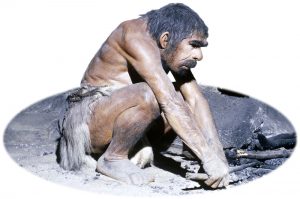Since ancient times, the Eye of Horus, which is also referred to as the “all seeing eye,” is one of the most recognized symbols of ancient Egypt. The Egyptian symbol for the goddess Wedjat was used for protection, for healing, as well as for mathematical and medicinal calculations. The word Wedjat means sound, and it is the name of a cobra goddess often depicted as a rearing cobra. The all seeing eye continued in Egyptian civilization and was in use for thousands of years and still continues to be used today.1
According to Egyptian mythology, the god Horus lost his left eye in one of his struggles with the god Set, the brother of Osiris, for the right to rule Egypt, and to avenge the death of his father Osiris. The eye was later restored by the god Hathor, and his restoration came to symbolize the process of making whole and healing. Some other versions of the story indicate that the god Thoth restored the eye and not Hathor. The story states that the restored eye became a symbol of light, and represented protection, strength, and perfection. Although another version of the myth states that it was in fact the right eye and not his left, and that it represented the sun that was torn out again by Set during one of their battles.1

Thoth then restored all of the eye except a small piece that became the origin of the Horus-eye fractions. The right side of the eye equaled 1/2, the pupil 1/4, the eyebrow 1/8, the left side of the eye 1/16, the curved tail 1/32, and the teardrop 1/64. Once these fractions were added, they total 63/64, known in mathematical circles as the reciprocal 2N series and a complementary fraction. The Horus eye fractions were used for measuring grains and medicines.3
The right eye is said to be symbolic of the sun, the day, and its power. The left eye represents the waxing and waning properties of the moon–the Horus or light of the night. The two-winged eyes represent the two divisions of heaven: north and south, and sun and moon. The image uraeus was a symbol of kingship and power and said to be worn on top of the forehead. The Wedjat was also depicted as a leonine form known as the Eye of Ra. The Eye of Horus survived beyond ancient Egypt in various cultural, mystic, esoteric, and, more recently, neo-Egyptian traditions. The masonic symbol of the eye of Providence, which appears on U.S. currency, is said to derive from the Eye of Horus, as does the Rx symbol used by the pharmaceutical industry. Although some people believe the evil eye is part of the Wedjat tradition, it’s not, even though some sources may link the two. Therefore, the Wedjat is still popular as both a symbol and an amulet, either for protection or for its association with ancient Egyptian culture.4
- Encyclopedia of African Region, 2009, s.v. “Eye of Horus, ” by Denise Martin. ↵
- Encyclopedia of African Region, 2009, s.v. “Eye of Horus, ” by Denise Martin. ↵
- Edward Hincks, “On the Age of the Eighteenth Dynasty of Manetho,” The Transaction of the Royal Irish Academy Vol.21 (1864): 3-10. ↵
- Edward Hincks, “On the Age of the Eighteenth Dynasty of Manetho,” The Transaction of the Royal Irish Academy Vol.21 (1864): 3-10. ↵



58 comments
Emily Jensen
I have seen the symbol before on random books or stickers, but I had no idea what the meaning behind the sign was prior to reading this article. I enjoy reading ancient mythology, so it was a pleasant surprise to read that there is a connection between the symbol and Egyptian mythology. This article did a wonderful job of explaining the lore behind the Eye of Horus, a great article!
Yadira Chavez
The meaning of the Eye of Horus has been lost in translation and placed into pop culture because it looks cool. Now that I am learning about the real history behind it, it is actually really cool and I like how the story is not only mythical but mathematical. Egyptian mythology is special and especially intricate, so I appreciate the fact that you incorporated the thought process into the article.
Gabriela Ochoa
This was a very interesting story. I knew that they eye was depicted on the U.S. Currency but never knew the meaning of what it meant or how it came to be. I also didn’t know that the eyes had different meanings to each one and that they meant the opposite of each other, also that the eye could be divided up into sections and used as math to measure things. The story of how it came to be was also interesting that he lost his eye in order to avenge his father’s death.
Madison Guerra
It is very interesting to learn about the ancient Egyptian beliefs and all of the stories that go along to explain the different beliefs. I never knew the origin of the eye of Horus and that it was believed to belong to one of their gods or rulers. It was also very cool to know how they use the measurements of the eye for pharmaceutical reasons.
Sofia Andrade
Through the years I had seen the Eye of Horas and associate it with the Egyptians. It was interesting to read this article that informed of the different myths that are associated with the origin of the Eye of Horas. The Eye of Horas had many uses for the Egyptians and is why it is significant to this day as a symbol and even an amulet. Once I see the Eye of Horas I will have some background knowledge.
Roman Olivera
This was a very in formative article about a topic that many people are ignorant to, The Eye of Horas. The discussion of its meaning can be different in many circles, but getting right down to its origins and not discussing its modern day uses or beliefs, is the best way to find out where it came from. There are many myths people believe in for the purpose of teaching life lessons and the history of the Eye of Horas is no different. The story states that the restored Eye of Horas became a symbol of light, and represented protection, strength, and perfection. These are the things that it represented to the people who heard this story. This is very different from the way people misrepresent it today and use it for a symbol of evil or some king of cult like beliefs. Thank you for just using the history of the Eye of Horas and not all that it is thought to be in modern circles.
Diego Aguilera
This article surprised me a lot because I did not except the article to teach me about the math side to the left eye, In all honesty I didn’t know the true meaning of this eye until I read this article. I would always see it in movies or always known it was Egyptian but never knew the true meaning and what it meant to everyone. I know theres another article regarding this mans dad and his death he had to avenge so I will definitely check that out. Overall a very interesting article that was nothing but informative and taught me something I didn’t know.
Madison Downing
I was not expecting this article to go over the mathematical fraction of Horus, that was so delightful to learn about! I was always aware of the Egyptian gods/goddess because I am a total historical enthusiast, especially ancient civilizations. And I never knew about how there were two sides of the myth dealing which eye was repaired. Even about how they use Egyptian symbols in the medical field, it’s amazing how powerful cultures could be to last thousands of years in the future. Great work, this was very interesting!
Caroline Bush
Interesting article! I have seen this symbol so many times in textbooks and whenever looking up Egyptian culture but I never knew the story behind it. I never knew that the eye was meant for healing or that it had an association with mathematics. I also did not know that Horus lost his eye due to the god Set, this detail I found to be particularly interesting because I have always been fascinated with the god set. Overall I really enjoyed this article and found the information presented to be interesting and well detailed.
Robert Rodriguez
Anything related to Egypt has always sparked my interest, I’ve seen this symbol many time but mainly in school but was never informed on its meaning. I found it interesting how the symbol itself was created in some form of fractions which is crazy to think about because how long ago this was created. The story behind the eye was extremely interesting. great article!